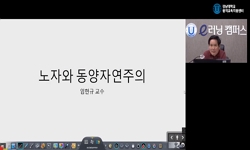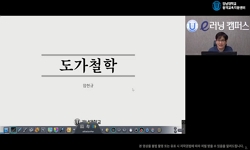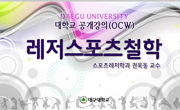Music, which generated from nature and human, has been developing consistently over the time and has come to what we now know. A 19th century philosopher Arthur Schopenhauer says, “music is a ‘transformed nature,’ which goes beyond this world an...
http://chineseinput.net/에서 pinyin(병음)방식으로 중국어를 변환할 수 있습니다.
변환된 중국어를 복사하여 사용하시면 됩니다.
- 中文 을 입력하시려면 zhongwen을 입력하시고 space를누르시면됩니다.
- 北京 을 입력하시려면 beijing을 입력하시고 space를 누르시면 됩니다.
슈만 피아노 모음곡의 생태주의적 교육 방법 연구 : 「나비op.2, 빈사육제 op.26, 어린이 앨범 op.68」을 중심으로 = A Study of Methods in Ecological Education through the piano suites by Robert Schumann : Focused on 「Papillons. op.2」「Faschingsschwank aus Wien. Op.26」「 Album fur die Jugend Op.68」
한글로보기https://www.riss.kr/link?id=T11477937
- 저자
-
발행사항
전주: 전북대학교 교육대학원, 2008
-
학위논문사항
학위논문(석사) -- 전북대학교 교육대학원 교육대학원 , 교육학(음악교육) , 2008. 8
-
발행연도
2008
-
작성언어
한국어
-
주제어
슈만 피아노 모음곡 ; 생태주의 교육 ; 자연주의
-
DDC
780.7
-
발행국(도시)
전북특별자치도
-
기타서명
A Study of Methods in Ecological Education through the piano suites by Robert Schumann : Focused on 「Papillons. op.2」「Faschingsschwank aus Wien. Op.26」「 Album fur die Jugend Op.68」
-
형태사항
vii, 64 p: 삽화; 26 cm.
- 일반주기명
- 소장기관
-
0
상세조회 -
0
다운로드
부가정보
다국어 초록 (Multilingual Abstract)
Music, which generated from nature and human, has been developing consistently over the time and has come to what we now know. A 19th century philosopher Arthur Schopenhauer says, “music is a ‘transformed nature,’ which goes beyond this world and shows the realm of the ultimate will.” This means that music is the most natural way to express human thoughts and feelings. But these days, music is gradually losing its original meaning due to function-based and cramming method of teaching. Therefore, to prevent this loss of its meaning, a nature-friendly teaching method is to be accomplished instead.
Robert Schumann(1801-1856) is one of the principle composers of the Romantic Period. Most of his works are based on lyrical poems, and have literary or pictorial titles. His music is full of unique characteristics that are derived from his sensitive emotions and liberal imaginations. Schumann’s romanticism is closely related to Jean Jacque Rousseau’s naturalism. Also, the relationship between literature and music in Schumann’s works is similar to the ‘symbiotic relationship’ of human and nature, a teacher and a student, a student and a student in ecology. Based on the premise that there is a connection between Schumann’s romanticism and both naturalism and ecology, this thesis will discuss about the ecologic teaching method in three of Schumann’s characteristic piano works.
Jean Jacque Rousseau(1712-1778), a naturalism educational philosopher, notes in his book, 「Emil」, that the purpose of musical education is the ‘child’s grows of nature,’ and also developing the ability of cognition based on sense instead of rationality by using “the laws of growth.”
Ecology is one of the philosophies from around the 21st century which appeared in need of examining negative aspects of human issues and the crisis of ecosystem, and finding a new solution. The purpose of ecologic musical education is ‘to achieve ecologic human development that encourages to love nature, and help the symbiotic of human and nature from interaction among creativity, performance, singing, and appreciation of music.’
There are 7 ways in ecologic teaching method in music. We should make a completely new system to make ecological students, based on the idea of the ecological paradigm that only the mutual help between the nature and human can protect the earth, which is the essence of life. Students need to get out of the framed classroom and proceed to the ecological field to see feel nature directly. In nature, they can share their experience and thoughts of the ecological contents, forming diverse networks between themselves and between them and their teachers.
From a periodic point of view, romanticism is closely related to naturalism because it has emerged in reaction of illuminism. Studying the works of Schumann, who represents the romantic period, based on ecology will lead the ‘music which most naturally expresses human thoughts and emotions’ to be acknowledged and respected. Moreover, it will help the learner to understand the global outlook in music, and not only to aesthetically converse(interact) with music itself, but also to assimilate variety of genre such as music, art, and literature.
목차 (Table of Contents)
- Ⅰ. 서론 = 1
- 1.연구의 목적과 의의 = 1
- 2.연구의 방법과 범위 = 2
- Ⅱ. 자연주의와 생태주의 = 3
- 1. 루소의 자연주의 교육사상 = 3
- Ⅰ. 서론 = 1
- 1.연구의 목적과 의의 = 1
- 2.연구의 방법과 범위 = 2
- Ⅱ. 자연주의와 생태주의 = 3
- 1. 루소의 자연주의 교육사상 = 3
- 2. 생태주의 = 6
- Ⅲ. 생태주의적 음악교육관 = 15
- 1. 생태주의적 교육관 = 15
- 2. 생태주의적 음악교육관 = 17
- Ⅳ. 슈만 피아노 모음곡의 생태주의적 요소 = 22
- 1. 나비 op.2 = 23
- 2. 빈 사육제 op.26 = 28
- 3. 어린이 앨범 op.68 = 33
- Ⅴ. 슈만 피아노 모음곡의 생태주의적 교육 방법 = 48
- 1. 나비 op.2 = 49
- 2. 빈 사육제 op.26 = 53
- 3. 어린이 앨범 op.68 = 55
- Ⅵ. 요약 및 결론 = 60
- 참고 문헌 = 62










